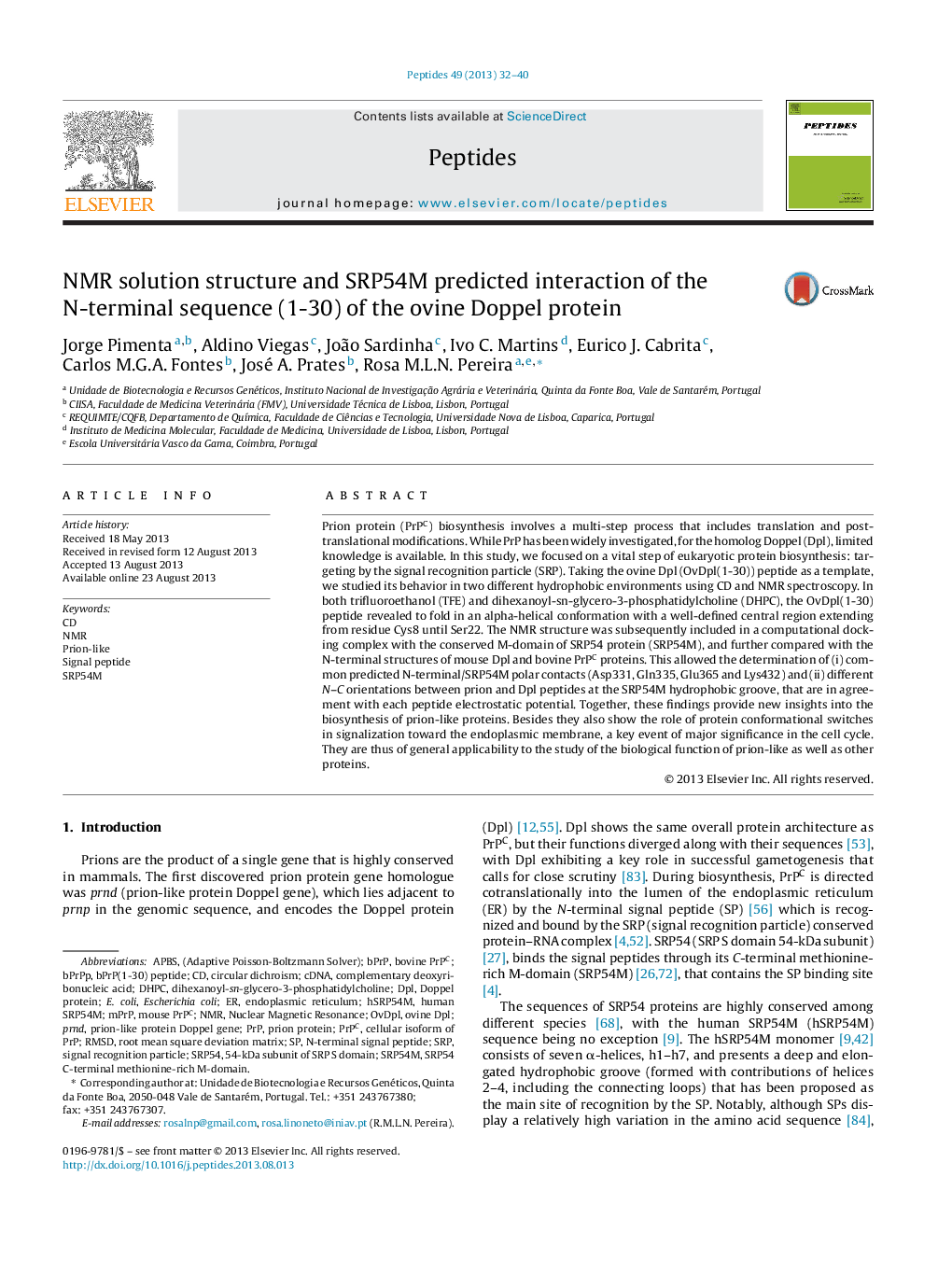| کد مقاله | کد نشریه | سال انتشار | مقاله انگلیسی | نسخه تمام متن |
|---|---|---|---|---|
| 2006168 | 1541730 | 2013 | 9 صفحه PDF | دانلود رایگان |

• Ovine Dpl prion-like peptide (1-30) structure was assayed via CD and NMR spectroscopy.
• OvDpl(1-30) NMR structure docking to SRP54M was studied via computational biology.
• Common SP/SRP54M polar contacts and different N–C orientations were determined.
• The findings provide new insights into the biosynthesis of prion-like proteins.
Prion protein (PrPC) biosynthesis involves a multi-step process that includes translation and post-translational modifications. While PrP has been widely investigated, for the homolog Doppel (Dpl), limited knowledge is available. In this study, we focused on a vital step of eukaryotic protein biosynthesis: targeting by the signal recognition particle (SRP). Taking the ovine Dpl (OvDpl(1-30)) peptide as a template, we studied its behavior in two different hydrophobic environments using CD and NMR spectroscopy. In both trifluoroethanol (TFE) and dihexanoyl-sn-glycero-3-phosphatidylcholine (DHPC), the OvDpl(1-30) peptide revealed to fold in an alpha-helical conformation with a well-defined central region extending from residue Cys8 until Ser22. The NMR structure was subsequently included in a computational docking complex with the conserved M-domain of SRP54 protein (SRP54M), and further compared with the N-terminal structures of mouse Dpl and bovine PrPC proteins. This allowed the determination of (i) common predicted N-terminal/SRP54M polar contacts (Asp331, Gln335, Glu365 and Lys432) and (ii) different N–C orientations between prion and Dpl peptides at the SRP54M hydrophobic groove, that are in agreement with each peptide electrostatic potential. Together, these findings provide new insights into the biosynthesis of prion-like proteins. Besides they also show the role of protein conformational switches in signalization toward the endoplasmic membrane, a key event of major significance in the cell cycle. They are thus of general applicability to the study of the biological function of prion-like as well as other proteins.
Figure optionsDownload as PowerPoint slide
Journal: Peptides - Volume 49, November 2013, Pages 32–40